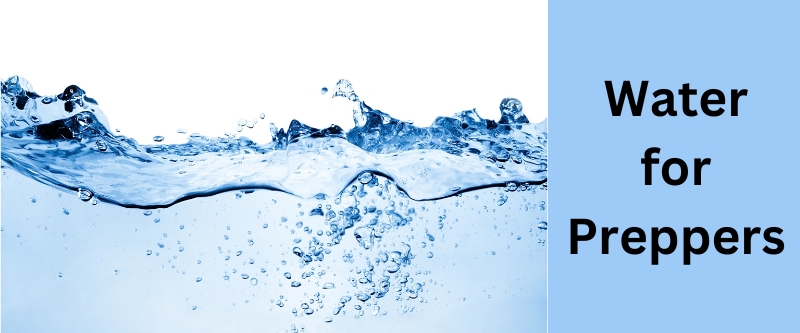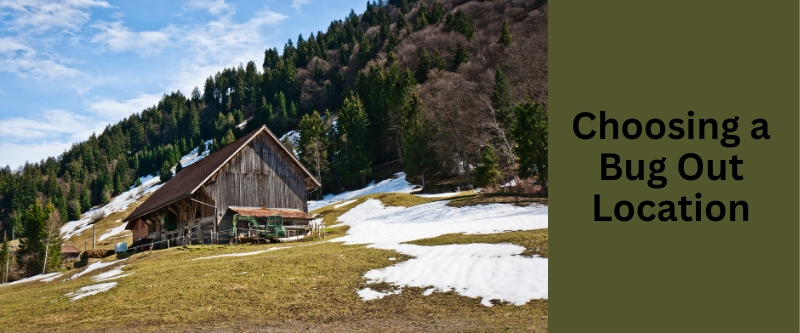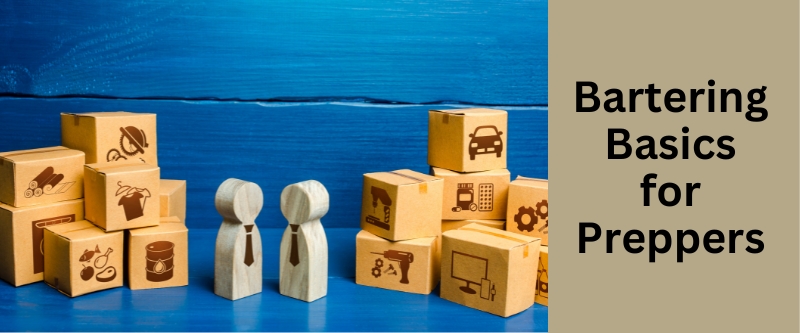Table of contents
Welcome to Water
The triad of preparedness is food, water and shelter. And as the adage goes, “You can live weeks without food, but only days without water.”
This article is an in depth analysis of all things water in the context of preparedness. It covers understanding your daily water needs and how to meet them in an emergency. And it introduces tools and resources to help you do it.
Water Needs and Usage
Water goes to the essence of what it means to be a human being, since it accounts for about 60% of our body weight. So, maintaining an adequate water balance in our system is crucial for our physiological functions. And this is why we must have water on hand to survive.
Plus, there are a myriad other uses and needs for water. Here’s a reminder:
Drinking Water
The human body can survive for weeks without food, but only a few days without water. On average, an adult requires about half to three quarters of a gallon of drinking water daily. And this can vary based on climate, age, physical activity, and individual needs.
Cooking and Food Preparation
- Hydration of Food: Many survival foods, like freeze-dried meals or certain grains, require plenty of water for preparation. It’s essential to account for this when calculating water needs.
- Safety: Cooking certain foods, especially meats, with adequate water ensures they’re safe to eat. Boiling can also be a method to purify water. Plus you need to wash fruits and vegetables.
On average, preparing a meal for a family of four consumes around half a gallon.
Hygiene and Sanitation
- Handwashing: Handwashing is one of the simplest yet most effective ways to prevent diseases. Especially after handling food, waste, or coming in from outside, washing hands can ward off many potential illnesses.
- Bathing: While daily showers might be a luxury in survival situations, occasional bathing or sponge baths can prevent infections and boost morale. A quick shower can use around 10 gallons. And you need to brush your teeth too.
- Sanitation: Flushing toilets might not be an option during prolonged power outages. However, water is still needed for makeshift sanitation solutions, like composting toilets or bucket toilets with sawdust.
- FIrst Aid: Cleaning wounds requires water.
Special Considerations
Pregnant or nursing women, children, the elderly, and people with certain medical conditions have enhanced water needs. So you need to factor in these requirements when planning your water storage.
Cleaning and Maintenance
- Utensils and Tools: Keeping cooking utensils clean prevents foodborne illnesses. Similarly, cleaning tools, especially those used for food or medical purposes, is crucial.
- Living Space: A clean living space is not just about comfort; it’s about health. Especially in confined spaces, regular cleaning can prevent mold growth and the spread of diseases.
Gardening and Livestock
- Home Gardens: For those preppers who maintain a survival garden, water is a critical resource. Drip irrigation, mulching, and choosing drought-resistant plants can optimize water usage.
- Livestock: Animals also need water, not just for drinking but also for cleanliness. Chickens, for instance, require water for drinking, but also for cooling in hot climates.
Miscellaneous Uses
- Firefighting: In situations where a small fire breaks out, having stored water can be a lifesaver.
- Cooling: In extremely hot conditions, water can be used for cooling, be it through damp cloths or misting.
Analysis & Priorities
Understanding and managing water usage is a balancing act. It’s about prioritizing needs, optimizing resources, and always being prepared for unforeseen challenges. When it comes to prepping, water isn’t just about survival; it’s about maintaining a semblance of normalcy in abnormal times.
Here are a couple of useful tools for water use analysis.
- The Hydro Coach app can help you determine your daily water intake based on personalized factors.
- You can attach the Flume device to your water meter to give you insights into your daily water consumption patterns.
Once you have a clear picture of your daily requirements, you can move forward with strategies to meet these needs efficiently in case of emergency. And you should not restrict yourself to bare minimums.
In our opinion, a realistic water allowance for preparedness planning purposes is 2 gallons per person per day. Budget for this and if things get tough down the road, you can introduce rationing.
Water Sources
In an emergency scenario, having a reliable water source is the first priority. And, while stored water can sustain you for a while, it’s essential to know where to find and how to utilize alternative water sources, when your reserves run low.
In fact, it is a good idea to have an alternative source of water built into your home in the first place. Although, realistically, this does not apply to apartment living.
These alternative water sources may be broadly categorized as “home” or “survivalist.” But there is some crossover between them.
Home Water Sources
Rainwater Harvesting
Depending on your local climate, collecting rainwater is an efficient way to replenish your water supplies. Using tarps, gutters, downspouts, water barrels, or cisterns, you can set up systems to capture and store rainwater from rooftops or other catchment areas.
However, while rainwater is relatively clean, it can pick up contaminants as it falls, so filter and purify it.
Here is a YouTube explanation of rainwater harvesting.
Dew Collection
- Dew Traps: Using wide, flat surfaces like metal or plastic sheets, dew can be collected during the early morning hours. The sheet’s angle directs the dew into a collection container.
- Rooftop Dew Collection: In certain climates, rooftops can be effective dew collectors. The principle is similar to rainwater harvesting but focuses on the moisture from overnight cooling.
- Early in the morning, you can collect dew from grass, leaves, and other surfaces using a cloth. It’s a labor-intensive survivalist method but can provide drinkable water without the immediate need for purification.
Wells
Many people in rural areas are already on wells. In an emergency scenario it is likely unrealistic to dig a well after the event but it may be an option.
Atmospheric Water Generators (AWG)
The working principle is that AWGs extract water from humid ambient air by cooling the air and producing water condenate, just like a dehumidifier but with the purpose of producing potable water. They work on the principle of cooling the air to condense the moisture. Check these out:
And combined with solar charged batteries and inverters they make a great off-grid water supply solution.
Here is a different technology for harvesting water from the atmosphere:
Survivalist Water Sources
Rivers, streams, lakes, ponds, and reservoirs
These are a go-to source of water but prone to contamination. Moving water is generally safer than stagnant water. But always choose upstream water, away from human settlements. Always purify water from these sources.
Snow and Ice
In colder climates, melting snow and ice can provide a freshwater source. Ensure you melt it before drinking, as consuming snow can lower your body temperature.
Coastal Sources
If you’re near the coast, seawater can be a potential source. However, you cannot drink it directly due to its salt content. Desalination, through distillation or reverse osmosis filtration, is required to make seawater potable.
Transpiration Bags
By tying a clear plastic bag around a leafy branch, you can collect water through plant transpiration. It’s a slow method but can be a lifesaver in desperate situations.
Water Transpiration
Water Storage
Water storage is the cornerstone of your water preparedness plan. You cannot rely on regular water access in an emergency. So you have got to have a reliable stored supply to cover it. And the key here is to choose storage solutions that align with your space, budget, and long-term requirements.
Water Storage Solutions
Below we have listed and illustrated some long and short term water storage solutions. Some are suited to apartment dwelling, where space is tight and weight is a major consideration. Others are more suited to suburban or rural home settings.
We start with lighter, space=saving, and shorter-term water storage options. And we progress to the bulkier and heavier long-term storage solutions., What becomes obvious when you look at this progression is that the further out of town you get, the better equipped you can be to handle a lengthy water emergency. And this calculation should bear on your overall emergency risk assessment.
Bottled Water
A staple in most households, bottled water is convenient and portable. Ensure you store them in a cool, dark place and rotate them out based on the expiration dates.
Collapsible Water Bottles
Use collapsible water bottles when needed and fold them down when not in use, saving precious space.
Glass Water Containers
While heavier and more fragile than plastic options, glass containers don’t impart any flavor to the water and won’t degrade over time. They’re excellent for long-term storage, provided they’re kept in a stable, safe location.
BPA-Free Plastic Jugs
These jugs are commonly available in sizes ranging from one to seven gallons. They’re lightweight, making them suitable for short-term emergencies or situations where you might need to move quickly. The BPA-free material ensures that the water doesn’t get contaminated with harmful chemicals. Choose a type that stores neatly.
Collapsible Water Containers
Made of flexible materials, these containers can be folded when not in use, saving space. They’re ideal for camping trips or as a backup water source in emergencies.
Stainless Steel Water Containers
Durable and resistant to corrosion, stainless steel containers are perfect for those looking for a non-plastic option. They’re often used by campers and hikers due to their durability.
Water Bricks
Water bricks are stackable, durable containers that typically hold 3.5 gallons of water each. Their interlocking design makes them easy to store in tight areas, and their handle ensures portability.
Bathtub Bladders
Bathtub bladders are great for short-term emergencies.
Standard Size Water Containers
These containers are specially designed for water storage, made from food-grade plastic, and often come with spigots for easy dispensing. Sizes can range from 5 to 7 gallons, making them manageable and portable. And they can be stackable.
Water Bladders
These are large, flexible storage solutions (larger than the bathtub bladder).
Water Barrels
Typically made of dense plastic, these barrels can store 30 to 55 gallons or more. When filled they are very heavy so best for basements or garages. But remember to place them on wooden pallets to prevent the cold floor from affecting the water’s temperature. You can get high capacity water barrel arrangements like this and this. And we like this Augason Farms kit.
Tote Tanks
You may find a rolling Barker Tote Tank a handy thing to have.
IBC Totes
Intermediate Bulk Containers (IBC totes) are large containers often used in industrial settings and are usually food grade. They may for example originally be used for storing food syrups. However, they can be repurposed for water storage. They hold 275 gallons or more. Ensure they’ve been cleaned and were not previously used to store harmful chemicals. Do a Google search for a local supplier. It’s a good idea to put a cover on them, as in the illustration.
Water Caches
These are durable tubes or containers designed to be buried underground. Preppers use them to store water in secret locations, ensuring they have a backup supply in various places. One way to make a water cache is to bury a trash bin and put a water bladder in it.
Underground Tanks
For those with the means and space, underground tanks can store thousands of gallons, ensuring a long-term supply. They’re protected from sunlight, which reduces the risk of algae growth. Here are some suppliers:
When considering an underground tank, check local regulations and guidelines. Also work with professionals for the installation to ensure safety and the tank’s longevity.
Above Ground Tanks
Above-ground water storage tanks are designed for outdoor placement and can store water in quantities ranging from a few hundred to several thousand gallons. Made from durable materials like polyethylene or metal, these tanks are UV-resistant and can withstand various weather conditions.
Their elevated design ensures a natural water pressure for easy dispensing. While they are more visible than their underground counterparts, they offer the advantage of easier inspection, maintenance, and cleaning. For those in areas prone to freezing, insulation or heaters might be necessary.
Brands like Bushman Tanks or Norwesco offer a range of sizes and designs to fit different needs. And, when considering an above-ground tank, it’s essential to prepare a solid foundation, like concrete or gravel, to support the tank’s weight when filled.
Rotation and Maintenance of Stored Water
You must rotate (replace) and maintain your stored water to ens[ure its safety and usability for when you need it. You can’t just store and forget it. Over time, even well-stored water can become contaminated or develop an unpleasant taste. Heree are some tips to keeping your water storage in optimal condition:
Regular Rotation
- Short-Term Storage: Tap water stored in containers should be rotated every six months. This keeps it frash and free from bacterial growth.
- Long-Term Storage: Commercially bottled water or water stored with preservatives can last longer, but it’s still recommended to rotate every 12 to 24 months.
- Note: If your water is stored underground or in a basement, you are going to need a pump to rotate it.
Inspection
- Regularly check your water containers for any signs of damage, such as cracks, leaks, or seal degradation. Damaged containers can allow contaminants to enter.
- Look for any signs of algae or bacterial growth, especially in transparent containers exposed to sunlight.
Cleaning Containers
- Before refilling a portable container, clean it with a mild bleach solution (one teaspoon of unscented bleach per gallon of water) to kill any potential bacteria. Rinse thoroughly to ensure no bleach residue remains.
- For long-term storage containers, consider using specialized water storage sanitizers available in the market.
Aeration
Water that’s been stored for a long time might develop a flat taste. This is due to the lack of oxygen. Pouring the water between two containers a few times can reintroduce air and improve the taste.
Protection from Sunlight
Sunlight can promote the growth of algae and bacteria in stored water. Always store water containers in a dark, cool place. If using transparent containers, wrap them in dark plastic or cloth to block out the sun.
Temperature Considerations
Extreme temperatures can affect the quality of stored water. While freezing won’t make water unsafe, it can cause containers to crack. On the other hand, high temperatures can promote bacterial growth. If you can, store water in a location with a stable, cool temperature.
Adding Preservatives
For long-term storage, consider adding water preservatives, which can extend the water’s shelf life. These are available at most prepper supply stores. Always follow the manufacturer’s instructions when using them.
Labeling
Clearly label containers with the date of storage. This helps in keeping track of rotation schedules. Also, note if any treatments or preservatives have been added. Keep a log with a spreadsheet linked to a calendar to remind you to take action.
Water Testing
It’s a good practice to test your stored water periodically. Simple water testing kits, available online or at home improvement stores, can detect contaminants and ensure water safety.
Scheduling
Follow a rotation and maintenance schedule, to ensure that your stored water remains safe, fresh, and ready for use in emergencies. In a crisis, water is one of our most vital resources, and its purity can make the difference between health and illness.
Water Treatment
Water is life. But when it’s contaminated, it can also bring disease and death. In emergency situations, having access to clean water is paramount. So,t ensuring its purity is equally crucia.
Here we discuss the various methods and tools available to treat and purify water and make it safe to drink and use. Some of these are appropriate for survivalist applications.
Boiling
- The Basics: Boiling is one of the oldest and most reliable methods of water purification. By bringing water to a rolling boil for at least one minute (three minutes at higher altitudes), you can kill most pathogens, including bacteria, viruses, and protozoa.
- Pros and Cons: While boiling is effective, it does consume fuel and doesn’t remove chemical contaminants or improve the taste of the water.
Filtration
- Portable Filters: Devices like the LifeStraw or Sawyer Mini are compact, lightweight, and can filter out over 99.9% of bacteria and protozoa. They’re ideal for on-the-go purification and will fit in a backpack..
- Gravity Filters: Systems like the Platypus GravityWorks use gravity to push water through a filter, making them great for larger groups or basecamps.
- Hand Pump Filters: These filters require manual effort but can process larger quantities quickly.
- House Water Filtration: It’s a good idea to install a filtration system in your home, at least under the kitchen sink.
Chemical Treatment
- Iodine and Chlorine Tablets: These are lightweight and easy to carry, making them popular among hikers and travelers. They kill most bacteria and viruses but may leave an aftertaste. Liquid chlorine is fine too. You can use Chlorox.
- Liquid Drops: Products like Aquamira drops use a combination of chemicals to purify water. They’re effective against a broad range of contaminants and have a longer shelf life than tablets.
Ultraviolet (UV) Treatment
- How It Works: Devices like the SteriPEN use UV light to destroy the DNA of microbes, rendering them harmless.
- Considerations: UV treatment is effective and quick but requires batteries or a power source. It also doesn’t improve the taste or remove chemical contaminants.
Solar Disinfection (SODIS)
By filling clear plastic bottles with water and leaving them in direct sunlight for several hours, UV rays can kill harmful microbes. It’s a simple yet effective method in sunny climates.
Distillation
- Process: Distillation involves boiling water and then condensing the steam back into liquid. This process removes both microbial and chemical contaminants.
- Applications: While effective, distillation is energy-intensive and may not be practical in all situations. However, for those in coastal areas, it can be a method to desalinate seawater.
- The GRAVI-STIL will convert seawater (or any kind of natural water) to freshwater.
- So will this solar still.
- And check out this home made technique:
Solar stills are also a survivalist technique. Here is an explanation/demonstration.
Charcoal and Sand Filters
Using layers of sand, charcoal, and gravel, you can create a basic filtration system to remove larger contaminants and improve water clarity.
Conclusion on Water Treatment
Ensuring the purity of your water is a non-negotiable aspect of preparedness. Whether you’re sourcing from a pristine mountain stream or a city faucet during a crisis, treating it guarantees safety.
Water Management
Water is a finite resource. Even in situations where it seems abundant, the reality is that it can run out or become contaminated. For preppers, effective water management isn’t just a strategy; it’s a lifeline. Let’s explore the facets of managing water to ensure its longevity, and maximize its utility.
Conservation Techniques
- Mindful Consumption: Be conscious of every drop. For instance, use a cup while brushing teeth or collect the water used in washing vegetables for watering plants.
- Reusing Water: Greywater, or the water from showers and sinks, can be reused for flushing toilets or watering non-edible plants.
- Fixing Leaks: A small drip can lead to gallons of wasted water over time. Regularly inspect storage containers, pipes, and faucets for leaks.
Storage Optimization
- Dark and Cool Places: Store water in a dark, cool place to prevent algae growth and maintain its freshness.
- Elevated Storage: Using gravity can aid in water distribution, especially in situations without power. It also makes rotation easier.
- Regular Rotation: For stored water that isn’t commercially purified, it’s essential to rotate stocks every six months to ensure freshness.
Monitoring and Measurement
- Daily Tracking: In an emergency, when you are relying on stored water, keep a daily log of water intake and usage. This helps in predicting future needs and adjusting consumption.
- Quality Checks: Regularly check stored water for clarity, odor, and taste. Any changes can indicate contamination.
Planning for Scarcity
- Backup Sources: Always have a secondary source of water, be it a nearby stream or rainwater collection systems.
- Rationing: In prolonged crises, ration water to ensure it lasts until the situation improves or an alternative source is found.
Water Portability
Being prepared also means being prepared to move. While having a fortified home base with ample water storage is ideal, there are scenarios where evacuation or “bugging out” becomes necessary. In such a case you must take your water with you and replenish as opportunity presdents.
Portable Containers
- Water Bottles: A basic necessity, durable water bottles like those from Nalgene or Hydro Flask can be easily refilled and carried. Opt for BPA-free materials and consider ones with built-in filters for added purification.
- Collapsible Water Containers: Brands like Vapur offer containers that can be rolled or folded when empty, saving space in your backpack.
- Hydration Bladders: Systems like the CamelBak allow for hands-free drinking, ideal for those on the move. They fit snugly in backpacks and come with tubes for easy sipping.
Transportation for Longer Distances
- Water Jerrycans: These are larger containers, often with a capacity of 5-20 liters, designed for transporting water over longer distances. They come with sturdy handles and are made of durable materials to withstand rough handling.
- Water Caddies: For those evacuating using vehicles, water caddies can store larger quantities (up to 100 liters) and are designed to fit in trunks or truck beds.
Considerations for Water Portability
- Weight: Water is heavy. A gallon weighs approximately 8.3 pounds. Always consider the weight when planning how much to carry, especially if on foot.
- Accessibility: Ensure that water containers are easily accessible. Hydration bladders with tubes or bottles with carabiner clips can be handy.
- Backup Methods: Always have backup methods for sourcing and purifying water. Carry purification tablets or portable filters as a contingency.
FAQs
Why is water so crucial in emergency preparedness?
Water is essential for survival. The human body can only survive for about three days without it. Beyond drinking, water is also vital for cooking, hygiene, and medical needs.
How much water should I store for emergencies?
A general guideline is to store at least one gallon of water per person per day for a minimum of three days. However, this can vary based on individual needs, climate, and activity levels.
Can I drink rainwater directly?
While rainwater is generally cleaner than surface water, it can still contain contaminants. It’s recommended to treat or filter rainwater before consumption.
How often should I rotate my stored water?
If using commercial bottled water, it can be stored indefinitely if kept in the right conditions. For self-filled containers, it’s advisable to rotate every six months.
What’s the difference between water filters and purifiers?
Filters remove bacteria and protozoa but may not effectively remove viruses. Purifiers, on the other hand, can remove all three.
Are atmospheric water generators a reliable source of water?
Atmospheric water generators can be a consistent source in areas with adequate humidity. However, they require a power source and may not be suitable for all environments. Solar power may be an option.
How can I ensure my water doesn’t get contaminated during storage?
Use food-grade storage containers, keep them away from direct sunlight, ensure they’re sealed correctly, and avoid storing near harmful chemicals.
Is boiling the best method for water purification?
Boiling is a reliable method to kill pathogens, but it won’t remove chemical contaminants. Combining boiling with filtration or purification can offer comprehensive water treatment.
How do I know if my water source is safe during a bug-out situation?
Always assume that natural sources are contaminated. It’s essential to treat or purify water from streams, lakes, or rivers before consumption.
Can I use pool water for drinking in emergencies?
Pool water contains chemicals that can be harmful if ingested. In dire situations, it can be used for non-potable needs like flushing toilets. If considering it for drinking, it should be filtered and treated extensively.










Leave a Reply